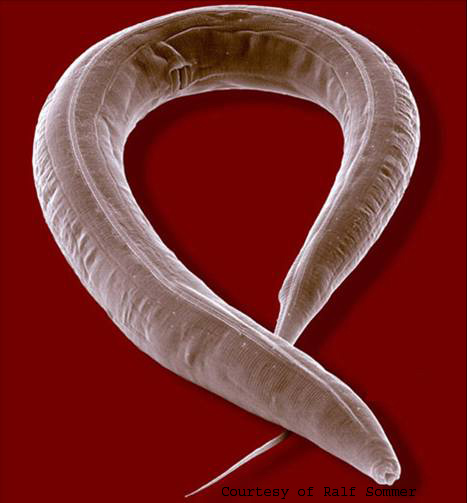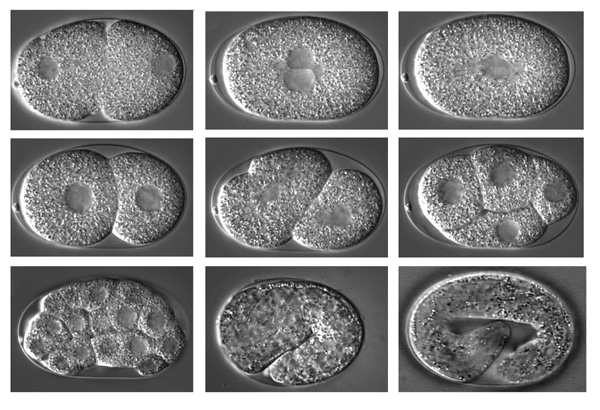P
granules function in germ line formation of Caenorhabditis
elegans

C.elegans
is a free living nematode about 1mm in length and is found in temperate
soils.
Research into the molecular and developmental biology of the organism
begun in
1974 by Sydney Brenner, and it has been used extensively as a model
organism
since.
This organism is used as an example because the same pattern of cell divisions is evident in all individuals, and a lineage tree can be constructed that traces the descent of each somatic cell.

The single celled zygote,
after fertilization is called
The AB cell
will divide
to eventually form the skin (hypoderm), neurons and the nervous system.
The P1
cell
will eventually form the muscles, digestive system and germ line.
P granules
are incorporated
exclusively in P1 at the first division. When P1 divides,
asymmetrically, the P granules are found in the progeny P2 cells (till Px). The Px cell with
these
granules becomes the germ line, while all other cells are somatic.
The
asymmetrical
distribution of p granules is microfilament dependant.
